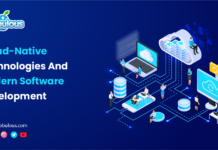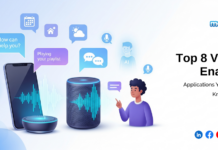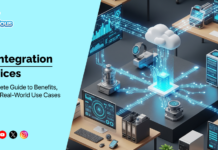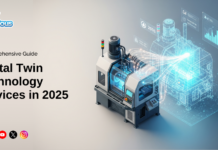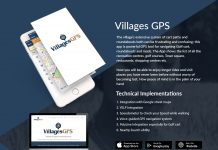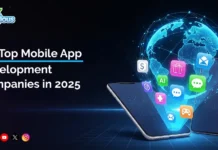What is Edge AI Development?
Edge AI development involves running AI models on devices at the edge of a network, close to where data is created, such as sensors, cameras, and phones. Instead of sending data to the cloud, it is processed on the device itself, reducing delay and increasing privacy.
If you’re looking to build scalable, optimized AI models for edge deployment, an AI & ML Development company offers end-to-end support, from training to hardware-specific tuning.
Common Use Cases of Edge AI Development
1. Autonomous Vehicles
Self-driving vehicles depend on quick decisions as they must analyze the road in real time. Edge AI development helps vehicles process data from cameras and sensors locally, meaning they can detect people, objects, or traffic changes instantly. Fast decisions make driving safer and smoother while also lowering the risk of accidents.
2. Healthcare Monitoring
Wearable health devices collect real-time data, and Edge AI development enables them to process that data locally, monitoring heart rate, oxygen levels, and sleep patterns. If there’s a sudden health issue, alerts are sent immediately. No need to wait for the cloud. Patients get quicker help, and their personal data stays private.
3. Smart Homes
Smart home devices like thermostats, cameras, and speakers use Edge AI development for fast, local decision-making. They respond instantly to movement, temperature, or voice. For example, a camera can spot a familiar face and unlock the door, and because data stays on the device, it’s safer. You get better speed and security.
4. Industrial Automation
Factories depend on nonstop operations. Edge AI development watches machines closely, finding faults, predicting breakdowns, and tracking quality. Processing is done on-site, meaning less cloud usage. If a machine fails, the system reacts right away, reducing downtime. Products stay consistent, making manufacturing smarter and more reliable.
5. Retail Analytics
Retailers now track shopper behavior using Edge AI development. Cameras and sensors gather data on movement, shelf stock, and customer preferences. All of this is processed locally, giving quick insights for better service and layout. This has resulted in improved sales. Customers enjoy a smoother experience as it’s efficient, private, and fast to react.
Benefits of Edge AI Development
1. Reduced Latency
Edge AI development results in faster reactions as data doesn’t need to be sent to the cloud. The device processes it right away, which matters in real-time situations. Think of robots, drones, or smart cameras. Delays could be costly, so Edge AI development avoids that by bringing instant feedback. Your devices respond faster and more accurately than ever.
2. Enhanced Privacy and Security
Data privacy is a major concern. Edge AI development keeps information on the device and doesn’t share it across networks, lowering the risk of hacking. It also complies with legal privacy regulations. Personal health or facial data never leaves the device. Edge AI development companies focus heavily on building safe and private solutions.
3. Improved Reliability
The internet isn’t always reliable; hence, Edge AI development works even when you’re offline. Devices can still make decisions and function properly, which is ideal for remote areas or when the network fails. Farms, factories, and rescue teams rely on this. Your system stays up and running as it doesn’t depend on cloud access.
4. Cost Efficiency
Sending huge amounts of data to the cloud costs money. Edge AI development helps by reducing that need. Data is processed locally, bandwidth use drops, and cloud storage is used less. Over time, your cloud bills go down. For large businesses, that means serious savings, as Edge AI development projects offer speed without the high price.
Edge AI Development Challenges
1. Limited Resources
Edge devices are small, having less power and memory than cloud servers. Big AI models won’t run smoothly on them, so developers must compress and optimize their models, which is a tough task. Balancing speed, accuracy, and size is essential, so model efficiency is critical in Edge AI development.
2. Security Risks
Edge devices are more exposed; hence, someone could steal or tamper with one. Without strong protection, your data and model can be stolen. Developers must secure devices using encryption and access control, and regular updates help. Many Edge AI development companies work hard to add layers of protection to every product.
3. Deployment Complexity
Deploying AI on different devices can get tricky. Each device may have a unique processor, setup, or memory, meaning models must be tailored to each one. Managing updates across a fleet of devices is also hard, so you need the right tools and planning; otherwise, systems can crash or fail.
4. Hardware Optimization
AI models need to fit the hardware. While some devices use ARM chips, others run on Intel or special chips. Developers must adjust models for each type, which includes reducing size and improving speed. Without this, performance drops; hence, hardware-specific tuning is a must for all Edge AI development applications to run smoothly.
Steps for Developing Edge AI
1. Identify the Use Case and Define the Goals
Start with a clear problem to solve, like tracking movement, spotting defects, or analyzing health data. Define what success looks like, and this step sets the direction. A clear goal saves time and helps choose the right model, device, and data. Edge AI development projects need a strong start.
2. Gather and Prepare Data
Your model learns from data, so collect high-quality data from real-world settings. Clean it and label it properly. For example, a camera model should be trained with diverse lighting and angles. Bad data gives bad results, so ensure your data reflects what the edge device will actually face every day.
3. Train and Optimize AI Models
Train your model on a strong system first, like a server or cloud. Then, shrink the model and apply techniques like quantization or pruning. The goal is to keep it small without losing performance. Edge AI development examples often use these tricks to make models faster and easier to deploy.
4. Deploy to Edge Devices
Now, install the optimized model on your device and use frameworks like TensorFlow Lite or ONNX. Test the model under real-world conditions and ensure it runs fast and doesn’t crash. Some developers use containers for this step so that updates are easier. Edge AI development applications must run smoothly right from the start.
5. Monitor and Refine Performance
After deployment, watch the model’s behavior by collecting user feedback and logs. If it’s not working well, adjust it and maybe retrain or fine-tune the model. Edge AI development companies often use remote monitoring tools that keep performance steady. Models must evolve with time and usage, so constant refinement is key.
6. Secure and Ensure Compliance
Data rules vary by country and industry, so always follow them. Use strong encryption and secure your devices with authentication. Avoid storing sensitive data if possible, especially in healthcare or finance. Ensure your solution meets all legal standards to build trust and avoid legal problems later.
Edge AI Development Frameworks
1. TensorFlow Lite
TensorFlow Lite is a light version of TensorFlow that is made for mobile and edge devices. Developers use it to convert models into smaller formats, which works well for voice, image, and object detection. Edge AI development examples using this framework often involve smartphones, IoT, and embedded systems. It’s widely supported and reliable.
2. PyTorch Mobile
PyTorch Mobile brings PyTorch models to phones and tablets, allowing you to optimize and deploy easily. Developers love its flexibility as it’s great for apps using computer vision or augmented reality. Edge AI development projects that need real-time vision or audio often rely on PyTorch Mobile for a smooth mobile experience.
3. ONNX Runtime
ONNX is a shared format for AI models that lets you run models from different sources. Train with PyTorch or TensorFlow, then deploy with ONNX, which is ideal for mixed environments. Edge AI development companies use it to keep their systems flexible and compatible with many tools and devices.
4. OpenVINO
OpenVINO is Intel’s toolkit for Edge AI development. It focuses on computer vision, and it speeds up AI on Intel hardware. Developers use it for cameras, drones, and robots, and it includes tools to optimize models and boost performance. Edge AI development applications in the visual field often run faster with OpenVINO’s special features.
5. Azure IoT Edge
Azure IoT Edge helps you bring cloud services to local devices; it uses containers to run AI at the edge. You can update, monitor, and manage everything from the cloud, and it’s great for businesses using Microsoft services. Edge AI development companies like this platform for its enterprise-level features and support.
6. AWS IoT Greengrass
AWS IoT Greengrass lets devices act smart, even offline, and it supports local computing and syncing with AWS. You can deploy models, collect data, and update remotely, making it perfect for farms, factories, and cities. Edge AI development projects that need both cloud and edge to work together benefit from this powerful tool.
Edge AI is particularly powerful in mobile environments. Whether you’re developing for iOS, Android, or cross-platform, a Mobile App Development Company ensures your app delivers fast, private, and intelligent experiences.
Future of Edge AI Development
Edge AI development is growing fast, and devices are getting better. AI models are becoming lighter, which means more power on small chips. Hybrid systems that mix cloud and edge are on the rise. Edge AI development companies are building new tools daily, and soon, smart homes, cities, and industries will all depend on Edge AI development.
Edge AI will likely merge with emerging technologies, including AI-driven personal assistants like Keeper AI, large-scale government-backed projects such as Stargate AI, and even content creation platforms like Kling AI.
Conclusion
Edge AI development is changing how we use technology, bringing fast, private, and reliable AI to local devices. From healthcare to smart cities, its impact is huge. As tools and models improve, more people will start Edge AI development projects. The future is smart, fast, and closer than ever, right at the edge.
Want to explore more cutting-edge AI applications?
FAQs – Edge AI Development
Q1. What is Edge AI?
Ans. Edge AI means using artificial intelligence directly on devices like phones or sensors. It does not send data to the cloud for processing to make decisions faster and improve privacy. Edge AI is useful when the internet is slow or unavailable. It works well in real-time tasks like smart cameras and smart home devices.
Q2. Is Edge AI the future?
Ans. Yes, Edge AI is a big part of the future as it lets devices think and act without needing the cloud, meaning faster response and better privacy. It’s reliable even with weak internet. As more smart devices appear, Edge AI will grow and help improve technology in many different industries.
Q3. What is the scope of Edge AI?
Ans. Edge AI can be used in many areas, including smart homes, healthcare, cars, and factories. It works well where real-time processing is important. Devices can analyze data instantly, reducing delay. As technology improves, the number of Edge AI applications will grow and become more important daily.
Q4. How to learn Edge AI?
Ans. Start by finding a real problem Edge AI can solve. Understand what edge devices can and cannot do. Learn to collect and analyze data, then train and test AI models. Next, deploy them on devices. Finally, keep checking the models and make sure they perform well and keep improving over time.
Q5. What are the disadvantages of Edge AI?
Ans. Edge AI has some downsides, as devices have limited memory and processing power and are hard to update and maintain. Security is also a challenge, as hackers can target many small devices. Managing a large number of devices is tough. These problems can make Edge AI projects more complex to handle.
Q6. What is an example of an Edge AI application?
Ans. A common example is a smart camera with facial recognition, which processes video right on the device. It does not send all data to the cloud, saving internet bandwidth, working faster, and improving privacy. The camera can act quickly when it sees a known face.
Q7. What is the Edge AI lifecycle?
Ans. The Edge AI lifecycle is a step-by-step process. First, you identify the problem, then collect and prepare data. Next, train and test the AI model, and after that, deploy it to devices. The last step is monitoring performance, which helps ensure that the AI works well in real life.
Q8. Does Apple Intelligence use Edge AI?
Ans. Yes, Apple uses Edge AI in many of its devices, as it handles most data on the iPhone or Mac, protecting user privacy. For more complex tasks, Apple uses a special secure cloud called “Private Cloud Compute.” This mix of edge and cloud creates a smart and private system.
Q9. What is the prediction of Edge AI?
Ans. Edge AI is expected to grow significantly, and experts say the market could reach $157 billion by 2030. This is because more industries need fast, local data processing. Better networks like 5G also help. Edge AI will play a big role in healthcare, cars, smart cities, and many other fields.
Q10. What is Edge AI in finance?
Ans. Edge AI in finance means using smart tools on local devices that help banks and companies make fast decisions. They can detect fraud or help customers right away. Experts say Edge AI in finance could be worth $322 billion worldwide. As the market is growing fast, it’s a powerful trend.



